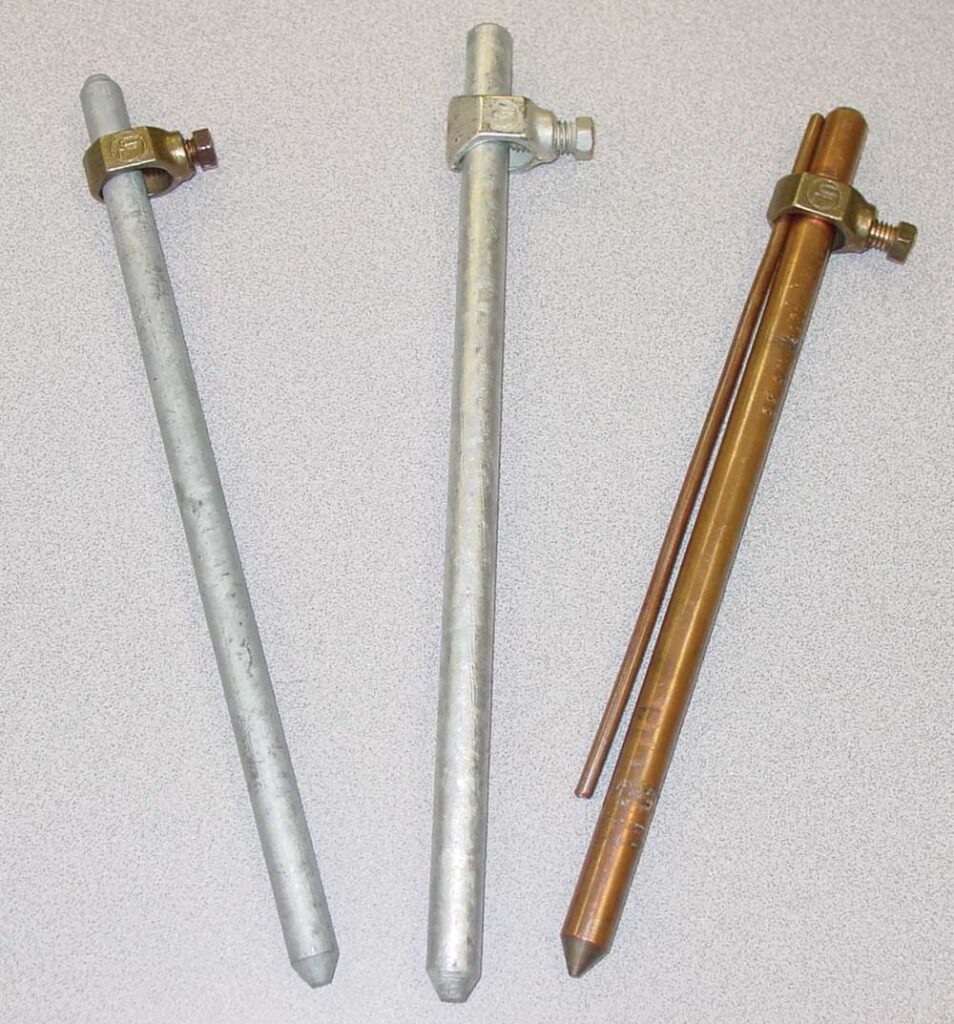
A ground rod is a component used to ensure the safety and proper functionality of overhead transmission lines. It is a metal rod that inserts into the ground to provide a low resistance path for electrical currents. Ground rods protect the system from lightning and fault currents to maintain voltage stability. They also reduce electromagnetic interferences to ensure reliability of the electrical infrastructure. Ground rods are from materials that provide conductivity and resistance to corrosion. These materials include copper, galvanized steel or copper-clad steel. Ground rods may be from one material or composed of many sections that connect to achieve the desired length.
Components of the ground rod
Ground rods for overhead transmission lines consist of several components. These components help to ensure effective grounding. Each of these components serve specific roles for the optimal performance of the grounding system. The following are the components of the ground rod.
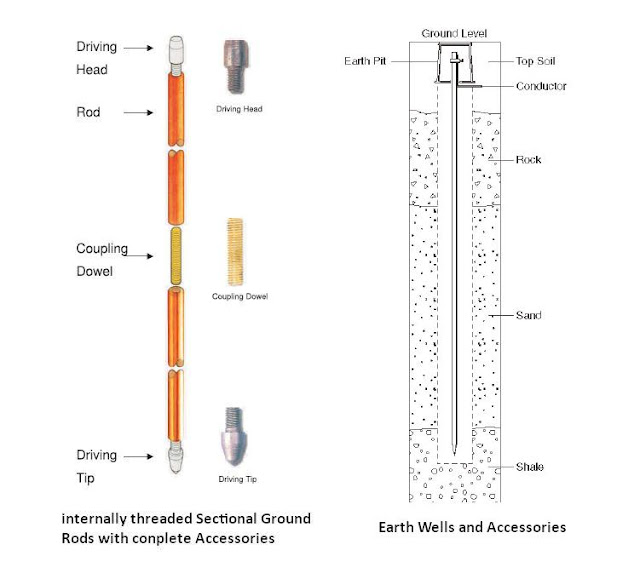
- Ground rod – this is the part that drives into the ground to dissipate electrical currents. It is from materials like copper, galvanized steel or copper-clad steel. The length and diameter varies depending on the soil conditions and local regulations.
- Grounding conductor – this connects the ground rod to the transmission tower or pole. The size depends on the current-carrying requirements. They are usually from copper or aluminum for their high conductivity and corrosion resistance.
- Ground clamps – this secures the grounding conductor to the ground rod. It is from materials such as copper, bronze or other corrosion-resistant alloys. Common types include mechanical clamps, compression connectors or exothermic welds.
- Ground enhancement material – this improves the conductivity around the ground rod. This is especially in areas with poor soil conductivity.
- Inspection and maintenance components – this includes ground rod cover that protects the top of the ground rod from physical damage. Test wells provide access to the ground rod connection for inspection and testing.
- Ground rod driver tool – this may be manual or powered to drive the ground rod into the ground. Types include sledgehammer or hydraulic drivers.
Key features for a ground rod
Ground rods have specific features that ensure their grounding effectiveness in electrical systems. These features help to ensure their durability, conductivity and ease of installation. The features also make them reliable components for grounding systems, protecting electrical infrastructure from lightning strikes and fault currents. The following are the features of the ground rods.
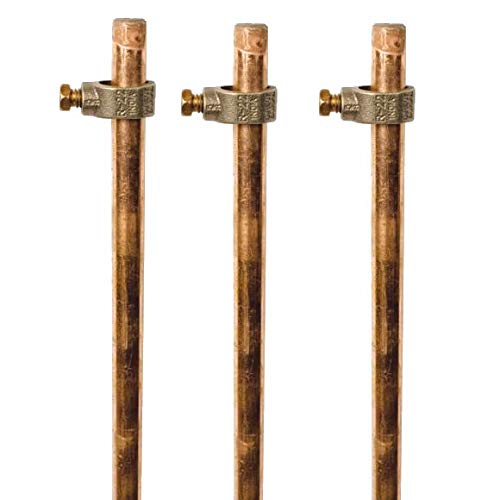
- Material – copper has excellent conductivity and corrosion resistance. Galvanized steel is cost effective compared to the other materials. Copper-clad steel combines the conductivity of copper with the strength of galvanized steel.
- Length and diameter – the ground rod length is typically 8 to 10 feet but can vary based on soil conditions. Common diameters are 5/8 to 3/4 inches to provide enough surface area for effective grounding.
- Corrosion resistance – ground rods have coatings to resist corrosion to extend their lifespan in harsh soil conditions. The rods undergo galvanization to enhance their resistance to corrosion.
- Ease of installation – the ground rods may have pointed or tapered ends to ease driving the rod into the ground. Some have a sectional design to reach the desired depth.
- Conductivity – materials like copper ensure low resistance to provide an efficient path for fault currents and lightning strikes.
- Mechanical stability – the ground rods are strong to insert into various soil types without bending. Some rods have steel core that provides extra mechanical strength. This is while maintaining good conductivity.
- Compliance with standards – the ground rods must meet standards set by NEC and IEEE to ensure safety and effectiveness.
- Connection points – the clamping area is a design that provides a secure connection point for grounding conductors. They also have smooth surfaces to ensure a good electrical connection without grounding clamps.
- Versatility – the ground rods are suitable for use in various soil conditions with enhancements. This helps to improve performance in poor soil conditions.
Purpose of the ground rods in overhead transmission lines
The ground rods sever several purposes on the overhead transmission lines and electrical systems. They focus on safety, reliability and system integrity. This is by protecting the equipment, ensuring system stability and safeguarding personnel. The following are the purposes of the ground rods in overhead transmission lines.
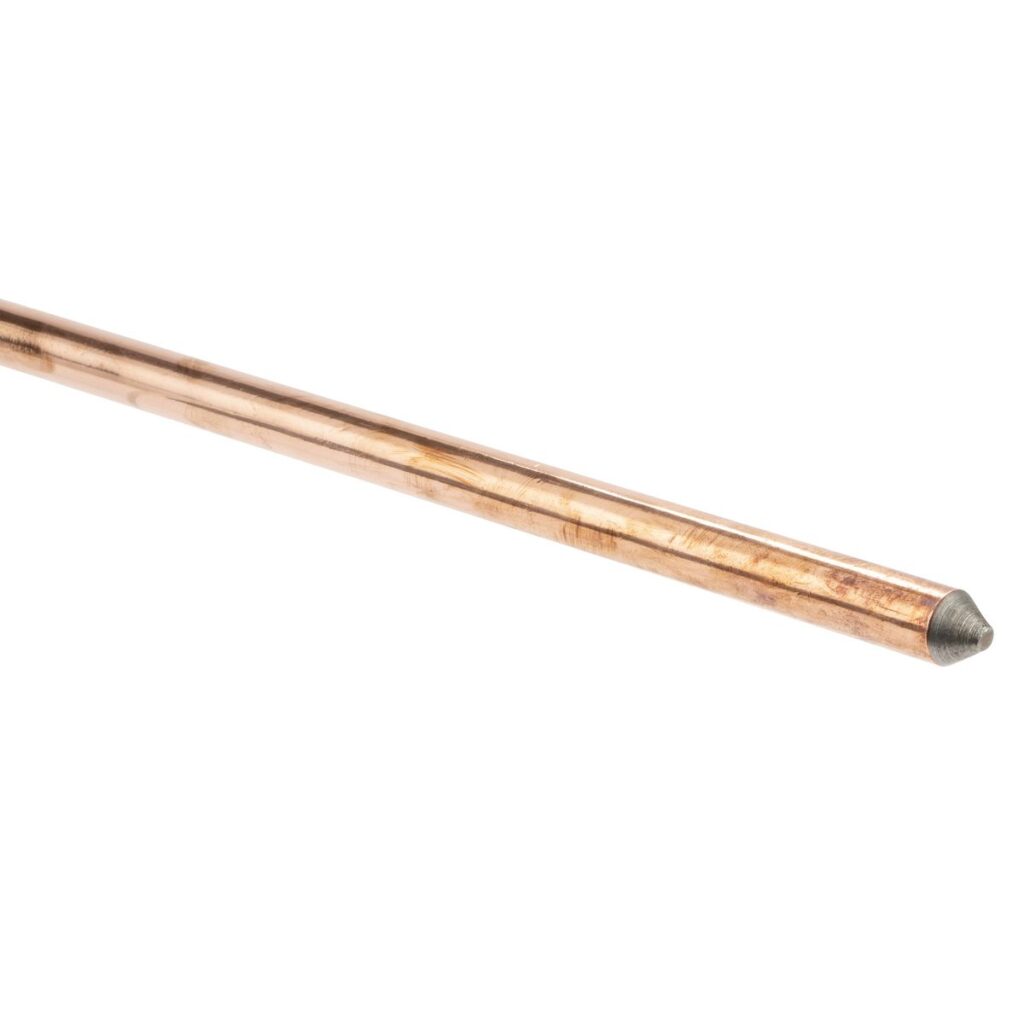
- Safety enhancement – ground rods provide a low-resistance path for lightning currents. This helps the currents to dissipate into the ground. This reduces the risk of damage to transmission lines and equipment. Ground rods help to direct the fault current into the earth.
- System stability and performance – ground rods establish a stable reference point for electrical system’s voltage. Proper grounding helps to reduce electromagnetic field interference which can disrupt the operation of communication systems.
- Equipment protection – ground rods help protect transformers, circuit breakers and other critical components from surges. They also help prevent corrosion of metal component in the transmission lines and substations.
- Safety grounding – the rods ensure all exposed conductive parts of the electrical systems are at earth potential. This is to reduce the risk of electric shock to personnel working on the system. They provide a path for electrical faults to flow into the ground.
- Regulatory compliance – the rods also ensure compliance with national and international electrical standards. They also include features that allow for easy inspection and testing. This is to ensure compliance and functionality.
- Operational reliability – ground rods help maintain the continuity of the electrical circuit and ensure uninterrupted power supply. The rods also help in stabilizing the system’s ground potential to reduce voltage fluctuations.
Accessories used in conjunction with ground rods
Ground rods work with several accessories to ensure proper installation, connection and maintenance. These accessories help to ensure a secure, effective and long lasting grounding system. They also ease proper installation, enhance conductivity and protect against environmental damage. Additionally, proper selection and use of these accessories help to maintain the safety and reliability of electrical systems. The following are the accessories used with the ground rods.
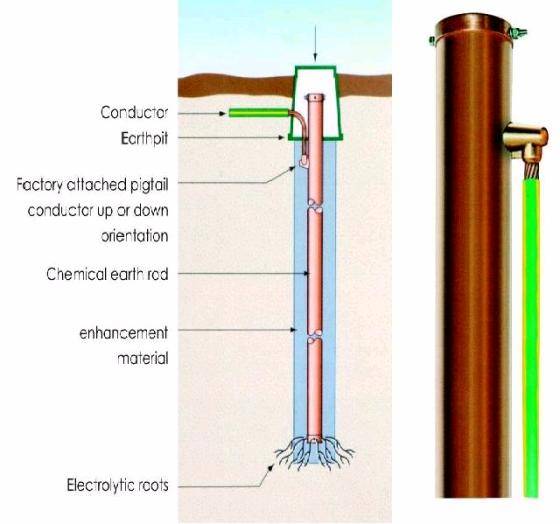
- Ground clamps and connectors – these connect the grounding conductor to the ground rod. Common types include mechanical clamps, compression connectors and exothermic welds. These clamps provide a secure and permanent connection to offer a durable and conductive connection.
- Ground enhancement material (GEM) – this helps to improve soil conductivity around the ground rod. They include bentonite clay, conductive cement and chemical grounding compounds.
- Couplers – these connect the sectional ground rods to reach greater depths. They feature threaded or compression-types and match the ground rod for compatibility.
- Driving sleeves and tips – driving sleeves protect the top of the ground rod during installation. Such precautions help to prevent damage and deformation. The driving tips ease the penetration of the ground rod into hard or rocky soil.
- Ground rod driver tools – these aid in the installation of ground rods and may be manual or powered tools.
- Test wells and inspection pits – these provide access to the ground rod connection for inspection, testing and maintenance. They also include a cover to protect the connection point from environmental elements.
- Anti-theft devices – these prevent the theft of copper ground rods in areas where metal theft is a concern. They include locking mechanisms that secure the ground rod and make it difficult to remove.
- Protective covers – the covers protect the exposed part of the ground rod from environmental damage, physical damage and corrosion. They are from durable, weather resistant materials.
- Ground resistance testers – these measure the effectiveness of the grounding system. They test the resistance between the ground rod and the earth.
- Bonding straps and jumpers – these ensure electrical continuity between different parts of the grounding system.
Challenges and issues facing the use of ground rods
Ground rods are essential components in ensuring the effective grounding in overhead transmission lines. Their use yet comes with several challenges and issues. Their effectiveness mainly faces soil conditions, corrosion, installation difficulties and maintenance issues. Additionally, addressing these challenges requires careful planning, proper materials and regular maintenance. The following are the challenges and issues facing the use of ground rods.
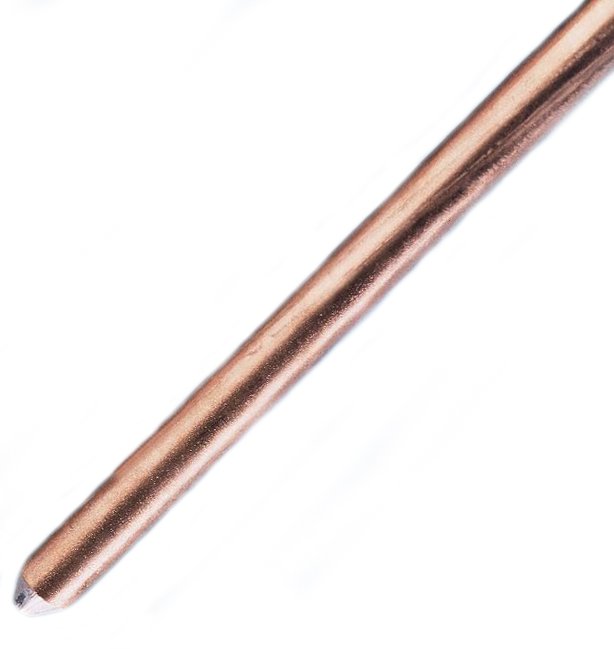
- Soil resistivity – soils like sandy, rocky, or dry soils have high resistivity which makes it difficult to achieve a low resistance grounding system. Soil resistivity varies depending on depth and moisture content.
- Corrosion – soil composition, moisture and salts can speed up the corrosion of ground rods.
- Installation challenges – driving ground rods into rocky or compacted soils can be difficult which increases labor.
- Environmental factors – changes in soil moisture due to weather conditions can affect the resistance of the grounding system.
- Ground rod theft – copper ground rods are valuable and can be targets for theft. This poses a security issue and disrupts the grounding system’s integrity.
- Cost – high-quality ground rods can be expensive especially materials like copper or copper clad steel. Labor, equipment and ongoing maintenance add to the cost of an effective grounding system.
Frequently asked questions
A ground rod is a component driven into the ground to provide a low-resistance path for electrical currents to dissipate into the earth.
Ground rods provide safety, system stability, equipment protection and regulatory compliance in overhead transmission lines.
Soil resistivity varies with soil type, moisture content and temperature which affects the grounding system’s resistance.
